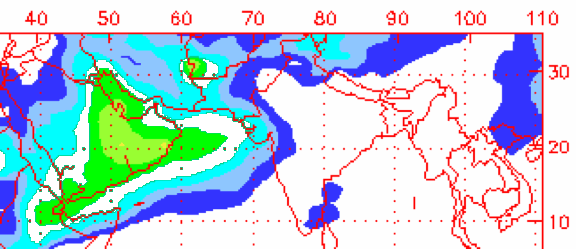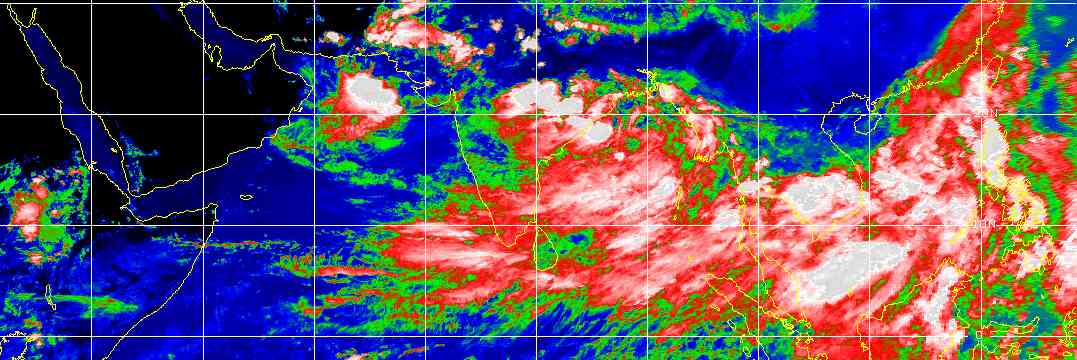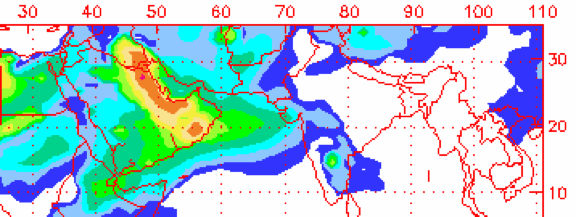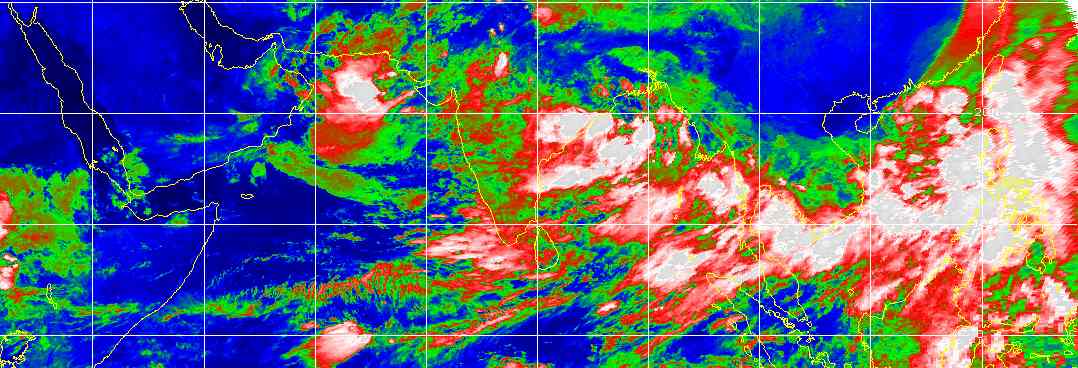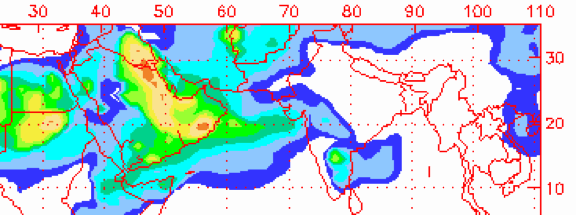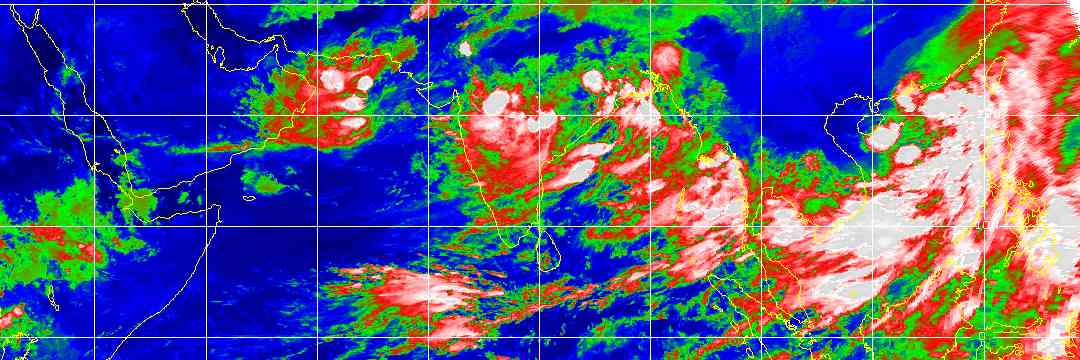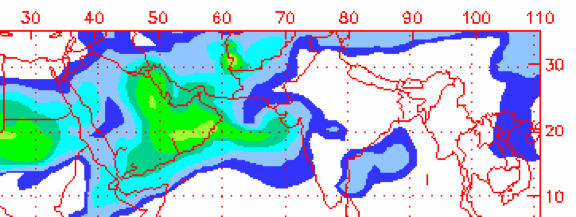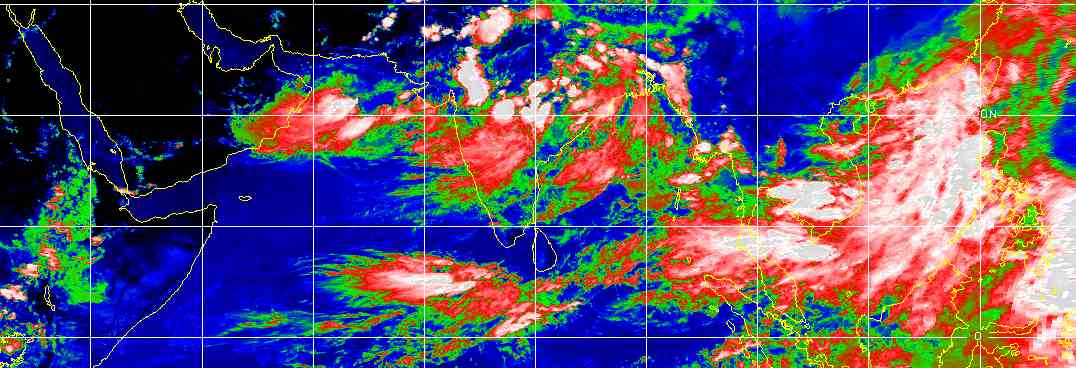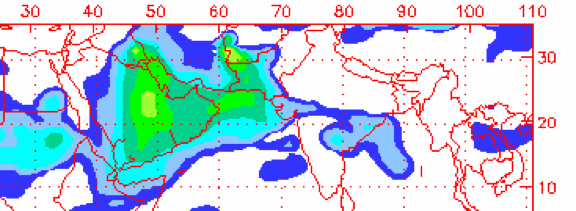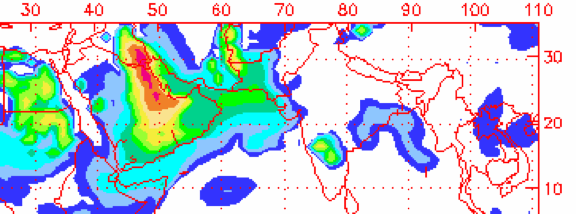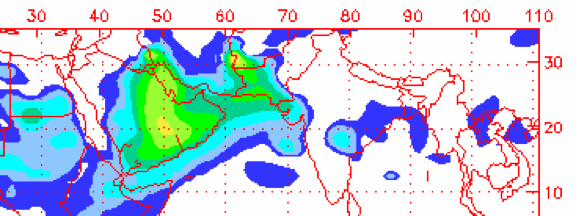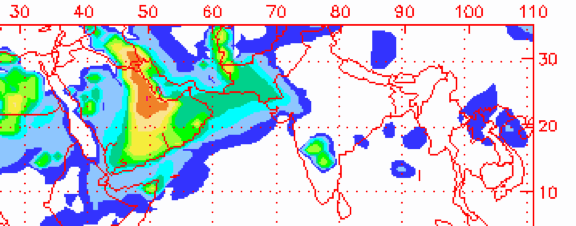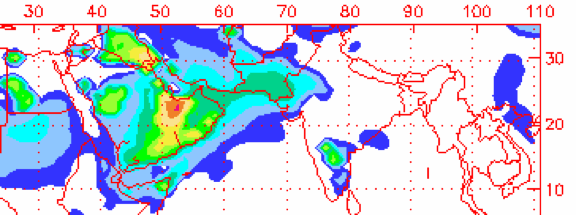Each year a man-made Dust Cloud forms from western India to Arabia, and blocks the monsoonal moisture, causing droughts wherever it hovers over countries. And this Pakistan-Arabia Dust Cloud can also cause terrible floods when it stalls the monsoon--either when it forms a wall or a pocket that traps the moisture for a period of time.
Each year, the monsoon moisture wants to move westward between a 10-30 degree noth track, and then it hits the wall of the Dust Cloud somewhere around the India-Pakistan border.
I am predicting that when studies are conducted of past and for future floods and droughts in both Pakistan and India, the research will show that the Dust Cloud was a major player in causing many of those events.
Since the problem of the Dust Cloud is man-made, when the native vegetation to not be conserved and the barren soil gets airborne. The easy solution is to set aside the lands that are the source and home of the Dust Could, as Ecological Restoration preserves, and allow and help the natural vegetation to keep the soil from becoming airborne in the first place.
The added benefit of eliminating the Dust Cloud, is more even rainfall for the region, more vegetaion and cooler summer temperatures, perhaps as much as 20 degrees F., and less drought and flood events.
Images from SSEC at the Universtiy of Wisconsin, and colors approximately relate to temperatures, and this image is called an IR HNC curve enhancement.


Images of the Dust Cloud are from NAAPS Monterey Aerosol Modeling. The worst case scenarios for either India or Pakistan, is when a north-south wall forms in the leading eastern edge of the Dust Cloud, or when a pocket form, trapping the monsoonal moisture and causing floods.

